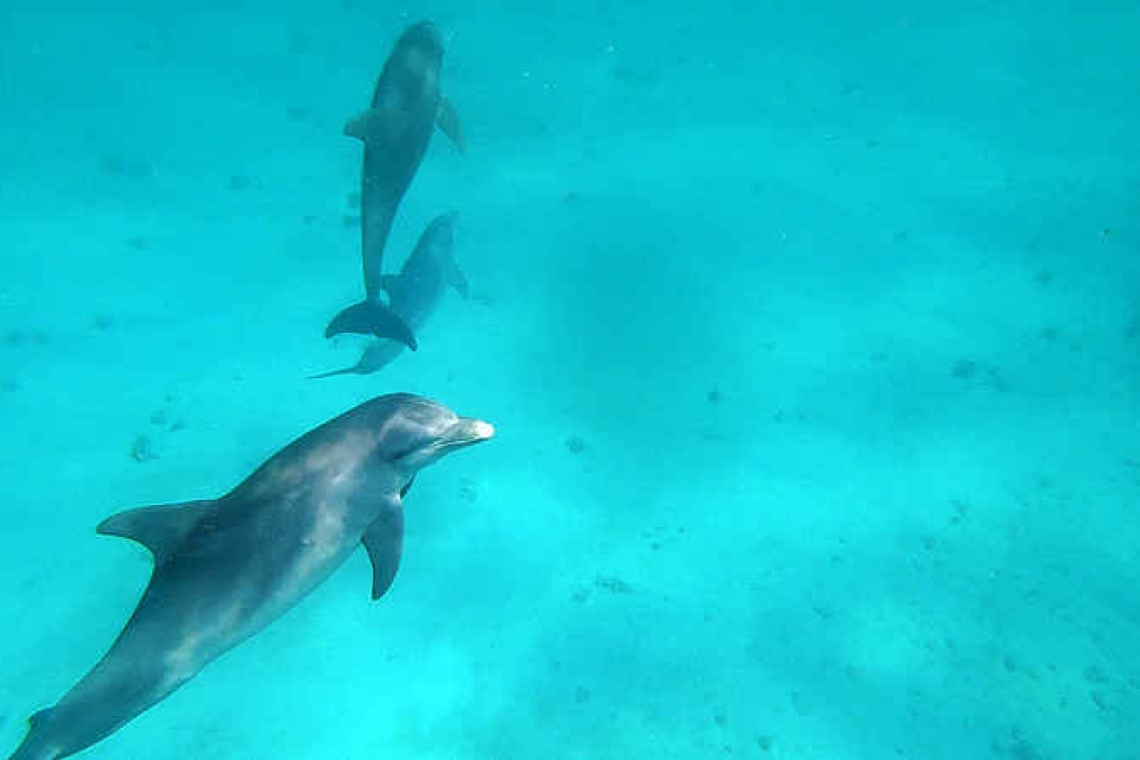Welcome back to the Nature Foundation St. Maarten’s educational series about our natural environment! This week, we will be learning about the dolphins that can be found around St. Maarten/St. Martin.
The Bottlenose Dolphin is the most commonly spotted Marine Mammal in the waters surrounding our island. They can be found all the way around the island, traveling in groups called pods.
The most recent recorded sighting was just outside of Simpson Bay in June, but often pods can be found in the late spring passing through the channel between the French side and Anguilla.
Dolphins are marine mammals (cetaceans), meaning they breathe air like we do! They use a blowhole on the top of their body like a nostril to come to the surface and breathe a couple of times a minute.
Like other mammals, they also give birth to live young, who then drink milk from their mothers. Family members and social groups can live together for decades hunting, mating and even protecting each other.
Dolphins are highly intelligent and social creatures. Due to the development of their brain, we know that these creatures feel emotions, learn and even reason (make decisions) much the same way that humans do. Not only do they teach their young and hunt together, pods have actually been seen to help an injured member of their group to the surface to breathe.
The language of the dolphins is very unique. They use both squeaking and clicking noises underwater. Each dolphin creates a special whistle as a baby. This is used for identification, just like a name! The clicking noises they use are for echolocation.
Used by a variety of animals, echolocation acts like a sonar system. When the dolphin makes a high frequency clicking noise, it projects out into the water and continues moving until it hits something. Once the noise hits an object, it bounces back to the dolphin (like an echo).
Based on what comes back in the echo, a dolphin can tell how far away the object is, where it is located, its size and shape, even the speed at which the object is moving!
As we said before, the Bottlenose Dolphin (Tursiops truncatus) is the most common marine mammal to be found in our area. These dolphins can grow over four metres (14 feet) long and can weigh up to 500 kgs (1100 pounds)!
In the wild, these dolphins can live to be 50 years old. Bottlenoses get their name from the shape of their beak/nose which is narrow and long. These dolphins have a curved mouth that makes it look like they are always smiling.
Here are some interesting facts about dolphins:
- There are certain connections between the areas of a dolphin’s brain that show that these animals are very affected to pain and stress. They feel sympathy, loss, pain, grief, joy and happiness. Many marine mammals have been viewed trying to save injured, trapped, or deceased family members or social companions.
- Bottlenose dolphins can recognise themselves in the mirror (a trait normally reserved for humans) and are very fast learners.
- Dolphins have been known to use sponges like tools by putting them on their noses to protect them while foraging!
- Pods organise and cooperate to escape predators, avoid danger and hunt!
Now that you know a lot of cool facts about dolphins, you can look for next week’s article about why these animals need to be protected and what you can do to help them!
Photo credit: St. Maarten Nature Foundation Intern Ray-Angel Simon-Lynch.







